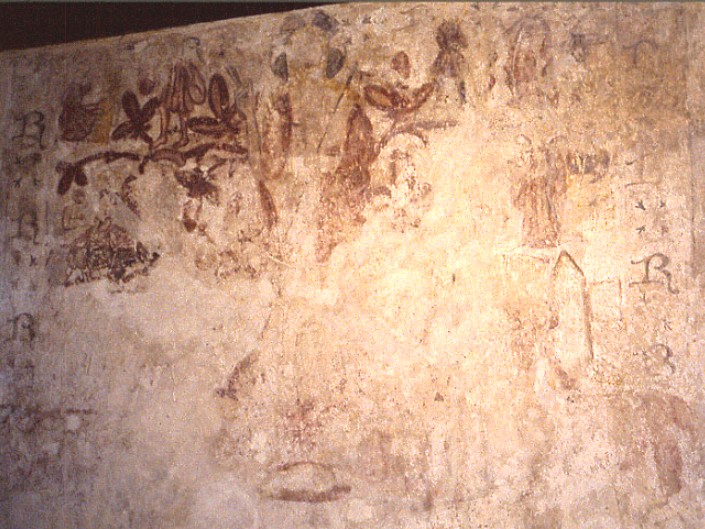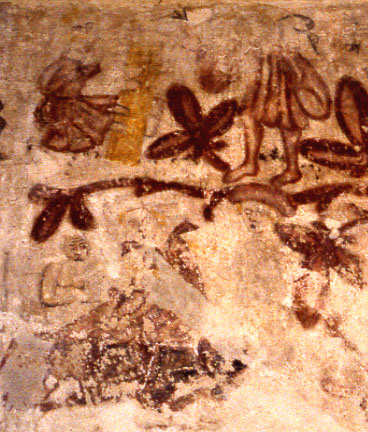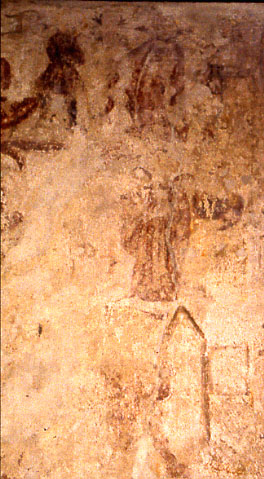Barnby, Suffolk (†St Edmundsbury & Ipswich) C.14?
The Seven Works of Mercy

The remains of an interesting interpretation of the Works of Mercy, structurally similar to the roughly contemporary example at Edingthorpe (about 25 miles away) but broader in style and perhaps less refined in treatment. That said, though, this would have been an impressive painting once, most notably for its imposing standing figure of Christ in the (literal and figurative) centre of the Works as they are carried out. Most of the lower part of the figure has gone, but Christ’s tripartite halo and right hand raised in blessing are still clear enough. He wears a cloak over a robe below, and seems to be holding a sceptre, visible now only as a narrow dark line slanting diagonally across his body from his left shoulder; it is entirely possible that these latter details imply that the painter wanted to show him as a once-mocked figure, as narrated in Matthew 27:28-29.

From the central figure, leafy branches extend to right and left, with the Works shown as their metaphorical fruit. At the top left a man sits in the stocks – perhaps the most popular way (certainly in this part of England) of showing Visiting the Prisoner. The stocks, in yellow ochre, show fairly well, and the imprisoned figure sits to the left, arms extended and legs trapped. The lower half (tunic skirt, legs and feet) of the man helping the prisoner is visible to the right of the stocks.

Below this only a few sketchy details, suggesting one or two figures bending over a bed, can be made out, but this was almost certainly Visiting the Sick. Clothing the Naked is probably below, and the scene below Christ’s feet might be Burying the Dead. All these are very hard to identify now. On the right-hand side, Feeding the Hungry, Giving Drink to the Thirsty and Receiving the Stranger are vertically arranged (detail, right), but it is very hard to make out much detail now.
The entire painting sits within a painted border featuring the letter ‘R’ alternating with floriated X-crosses. I do not know what these might mean, but perhaps someone else does.
Also in this tiny, unusually narrow church are an Annunciation and a very interesting 15th century Crucifixion including the two Thieves (a rare detail). Another medieval feature of interest is a rare intact banner-stave locker for storing the staves used in processions. It is still in use – for storing hymn books.